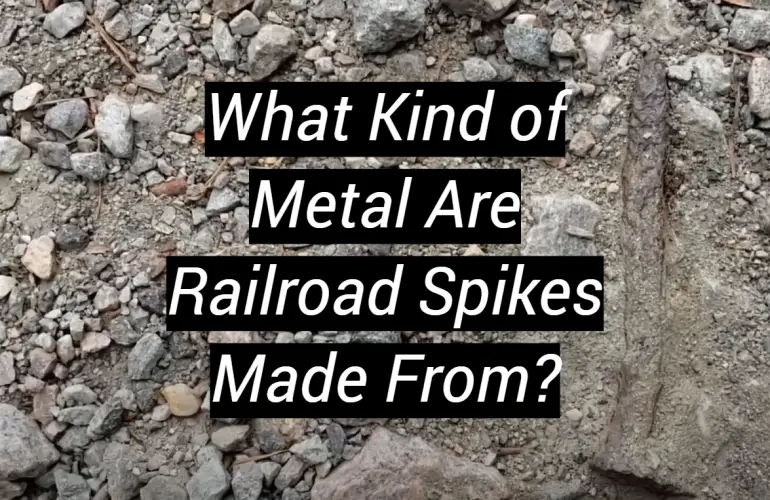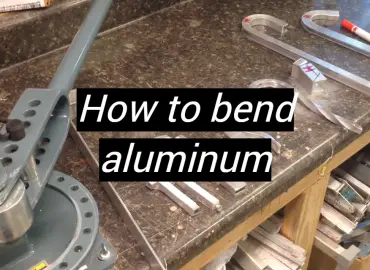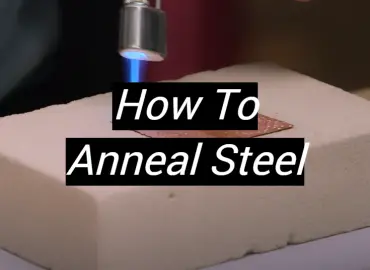If you’ve ever been on a hike or taken a walk, you’ve probably seen railroad tracks. The steel rails are held up by spikes driven into the ground. But what are railroad spikes made of? This material is chosen because it is strong and reliable.
In this blog post, we will dive deep into the world of metalworking to answer those important questions. Read on to learn all about one unique type of welding engineering used to create some truly remarkable structures!
What’s in a Railroad Spike?
Railroad spikes are also called track spikes. They are a type of metal fastener used to hold two pieces of railroad track together.
Track spikes come in different sizes, but all of them have a head and a pointy end. The pointy end is used to go into the ground or tie plate.
Most track spikes are made from steel, but they can also be made from brass, iron, or stainless steel.
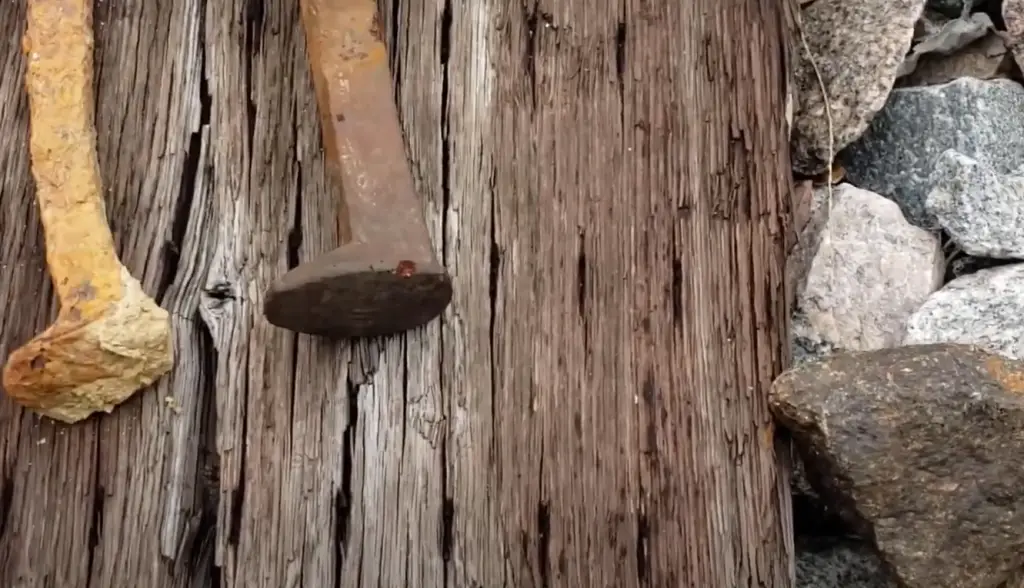
This is because railroad tracks need to be strong and not break when trains pass over them. Steel is the best metal for this because it has a high strength-to-weight ratio.
What Kind of Metal Are Railroad Spikes Made From?
Railroad spikes are generally made from either carbon steel or stainless steel.
The type of metal used for railroad spikes can be different depending on the speed of the trains that will use the tracks. For example, high-speed tracks may require a stronger metal than slow-speed tracks. [1]
Required Properties
Railroad spikes have to have certain properties. The most important property is high tensile strength, which means it can resist being bent or twisted. It should also be able to hold very heavy weights, like those from a passing train.
ASTM A65-07 Standard
The American Society of Testing and Materials (ASTM) is an organisation that tells what materials to use for railroad spikes.
According to its A65-07 standard, railroad spikes should be made from low carbon steel or stainless steel.
Category 1
Category 1 spikes are made from low carbon steel. They are used in slow-speed tracks, like those of a rail yard or industrial track. These require more corrosion resistance because they won’t get the same amount of use as high-speed tracks.
Category 2
Category 2 spikes are made from high carbon steel, which is more durable and stronger than low carbon steel. These are used on high-speed tracks, like those of a mainline track. They require less corrosion resistance because they will get more use.
Category 3
Category 3 spikes are made from stainless steel, which is the strongest and most corrosion-resistant type of metal. These are used on very high-speed tracks, like those of an express train.
Rail Spike Composition
Railroad spikes are made from either low carbon steel or stainless steel. This depends on the type of track they will be used on.
Other metals, like iron and brass can also be used but those materials are not usually seen in railroad construction. Steel is the most common and reliable metal for this purpose because it is strong and not very heavy.
Possible Variations
Railroad spikes can sometimes be made from other materials, like brass or aluminium. People might use these materials for decoration. It is also possible to make railroad spikes out of recycled metals, such as scrap iron or steel.
How to Work With Rail Spike?
The Annealing Process
The annealing process is a heat treatment that softens metals, like railroad spikes.
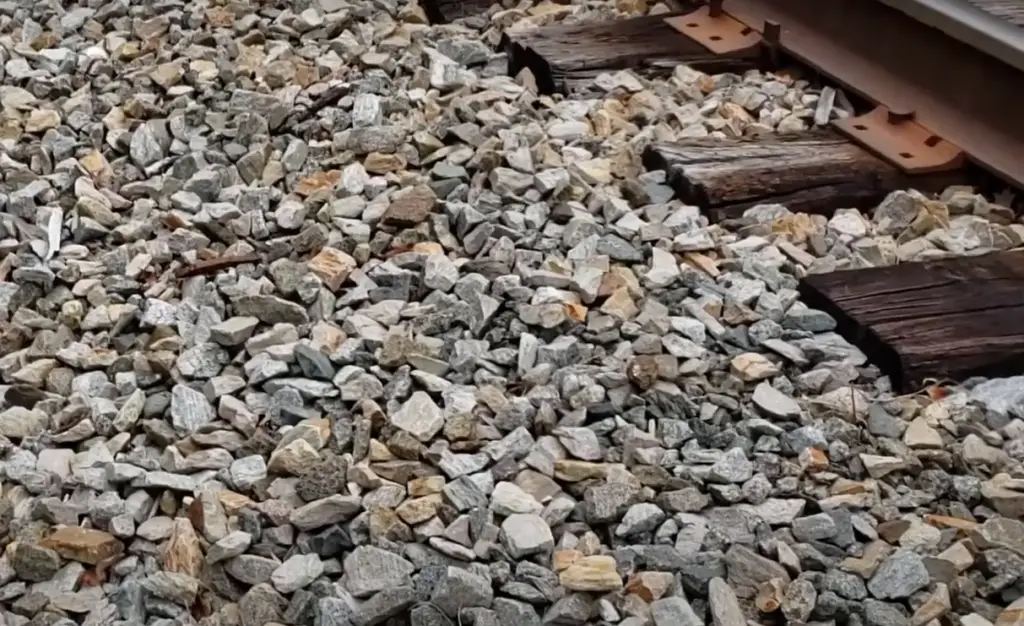
It makes them more malleable and easier to work with. This is important because it allows you to shape the metal into the desired shape and size.
Tools and Safety
You need to wear gloves, eye protection, and clothing that covers your arms and legs when you work with railroad spikes.
You also need to have the appropriate tools such as hammers, punches, chisels, files, and pliers.
Cutting
Cutting and filing railroad spikes is possible with the right tools. You can use a hacksaw or file to shape the metal, but you should be careful not to overheat it. This can weaken the metal and make it more brittle.
Forging
Forging is the process of heating and hammering railroad spikes into a desired shape. This is often done to make custom-shaped spikes for specific applications. You will need access to a forge or furnace in order to perform this process.
Why Are Railroad Spikes Made Out of Metal?
Railroad spikes are made out of metal because metal is strong and durable. This makes it perfect for holding down railroad tracks, which need to be able to withstand the weight of trains and vehicles passing over them.
The metal used in railroad spikes must not corrode easily. This is because the tracks will be exposed to all sorts of weather and moisture, which could cause them to rust or corrode over time.
Finally, railroad spikes need to be able to bend slightly when trains pass over them. This helps absorb shocks from the train and keep the track more stable. Steel is a good choice for this because it has the flexibility needed to do this job.
What You Can Make With Rail Spikes?
People use railroad spikes to make different things. Some people use them to make fence posts, gates, and other decorations. You can also use them to make jewellery or tools like hammers and chisels.
If you have access to a forge or heat treater, you can heat up the railroad spikes and bend them into the shape that you want. This is a great way to make custom items that are unique.
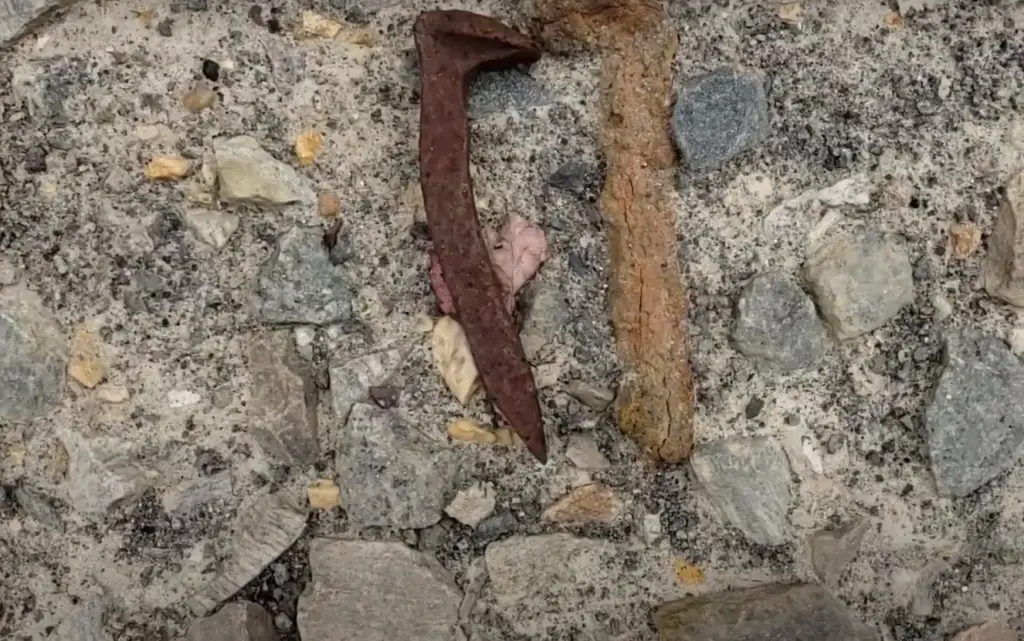
Railroad spikes can also be recycled and repurposed into art or other items.
Artists enjoy using railroad spikes because they provide texture, contrast, and visual interest to their work. From sculptures to furniture, there’s no limit to what you can make with railroad spikes.
FAQ
What are metal spikes made of?
Railroad spikes are typically made of low carbon steel or stainless steel. Other metals, like iron and brass can also be used but these materials are not usually seen in railroad construction.
Are railroad spikes strong?
Yes, railroad spikes are very strong and durable. This makes them perfect for holding down railroad tracks which need to be able to withstand the weight of trains and vehicles passing over them.
Can railroad spikes be recycled?
Yes, you can recycle railroad spikes into art or other things. Artists like using railroad spikes because they make the art more interesting to look at. You can use them to make furniture or sculptures.
Are railroad spikes dangerous?
Yes, railroad spikes can be dangerous if not handled or used properly. You should always wear gloves, eye protection, and appropriate clothing when working with railroad spikes.
It is also important to have the right tools such as hammers, punches, chisels, files, and pliers. Be sure to familiarise yourself with these tools before attempting any work on railroad spikes.
Would a railroad spike make a good knife?
No, railroad spikes are not designed for use as knives. They may be sharp enough to cut something but they are not designed to hold up against the constant stress of frequent cutting and could break easily.
It is also important to remember that railroad spikes are made of metal, so they can conduct electricity which could be dangerous if you’re working near power lines. It is always best to use a proper knife for any kind of cutting task.
What are railroad pins made of?
Railroad pins are usually made from steel, but sometimes they are made from other metals, such as brass or iron. They are often in the shape of an “L” and have a sharp head. This allows the pin to go through the track ties, which makes the tracks more stable.
Can I weld railroad spikes?
Yes, you can weld railroad spikes. However, if the spike is made from low carbon steel, it will need to be preheated in order for welding to be successful.
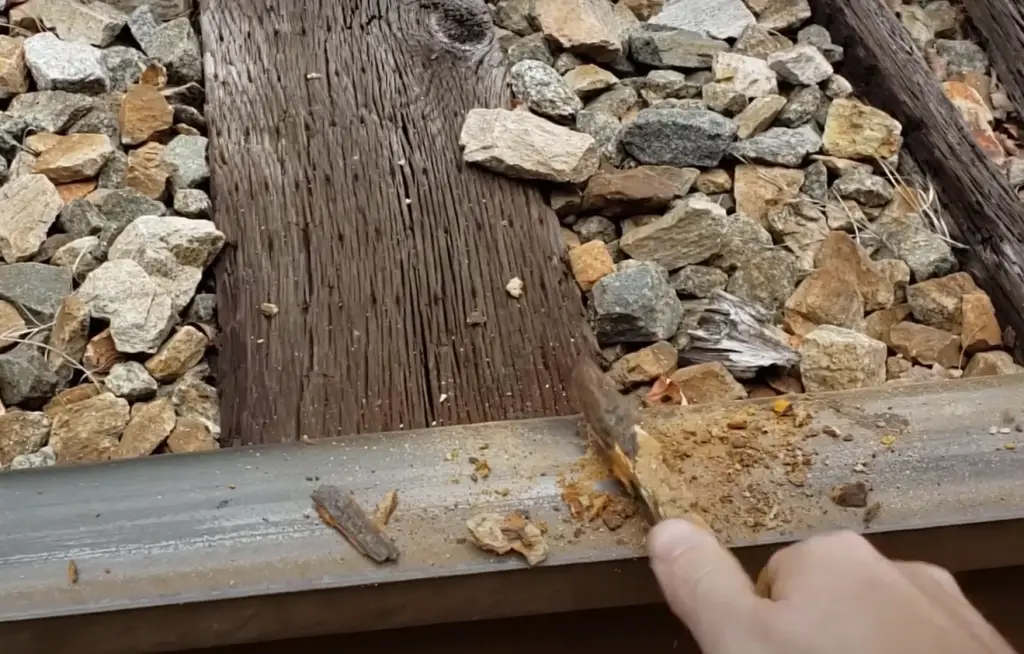
This helps prevent warping and keeps the metal from becoming brittle. It is important to follow all safety precautions when welding railroad spikes as they are still very hot even after cooling.
Are railroad spikes iron or steel?
Railroad spikes are usually made from steel. Steel is a strong, durable material that can withstand the constant forces of trains and vehicles passing over them.
Other metals, such as iron or brass, may also be used but these materials are not usually seen in railroad construction.
Is a railroad spike high carbon steel?
No, railroad spikes are usually made from low carbon steel. This makes them strong enough to hold down the tracks but still malleable enough to be bent and shaped for specific tasks.
High-carbon steel is much harder and less malleable which makes it difficult to work with. It is also more likely to crack and break if not handled with care.
Are railroad spikes sold in stores?
Yes, railroad spikes can be found at hardware and home improvement stores. They are typically sold in packs of 50 or 100 and come in different sizes and shapes to fit your project needs.
Be sure to double-check the material before purchasing as some may not be suitable for certain tasks.
What is the purpose of railroad spikes?
Railroad spikes are metal rods that help keep the tracks in place. They are driven into the ground and then bent over to hold the tracks down. This helps support the weight of trains and vehicles passing over the tracks and to ensure that they stay securely in position. Railroad spikes can also be used to attach track components such as switch plates and fishplates.
What other uses are there for railroad spikes?
In addition to their use in railroad construction, railroad spikes can be repurposed for multiple other uses. Craftsmen and artists often use them to make furniture, sculptures, or other art pieces.
They can also be used as fence posts or even tent stakes. Railroad spikes may also be used in garden or landscaping projects and can even be used as a decorative feature.
How do you remove railroad spikes?
Removing railroad spikes can be difficult. You need to use the right tools and be careful. The best tools for this job are hammers, punches, chisels, files and pliers.
You should also wear gloves and safety goggles as there is a risk of flying debris. Railroad spikes are made of metal so they can conduct electricity which could be dangerous if you’re working near power lines.
Why are railroad spikes so important?
Railroad spikes are an important part of the railway system. They help keep the tracks in place and secure, so that trains and vehicles can travel safely along them.
Without railroad spikes, tracks could become loose or detached, which could cause a derailment. Railroad spikes play a vital role in keeping the railway system running smoothly and safely.
Does the size of the railroad spike matter?
Yes, the size of the railroad spike does matter. Different sizes are used for different purposes and it’s important to know what size you need before beginning any project.
It is best to consult an engineer or rail expert before making a purchase as they can help determine the right size for your project.Do railroad spikes affect the environment?
Railroad spikes are made from steel which is a non-renewable resource and can be damaging to the environment if not recycled or disposed of correctly. It is important to follow local guidelines for disposing of railroad spikes and other metals as these materials can often contain toxins that could cause harm to wildlife or water sources.
Do railroad spikes come in different colours?
No, railroad spikes are usually silver or grey in colour. This is because they are made from low carbon steel which does not contain any other metals or pigments.
If you want to add a bit of flair to your project, consider using colored screws instead as these can often be found in a range of colors.
Which type of metal are railroad spikes made from?
Railroad spikes are typically made from low carbon steel. This type of steel is strong and durable, making it ideal for use in construction projects.
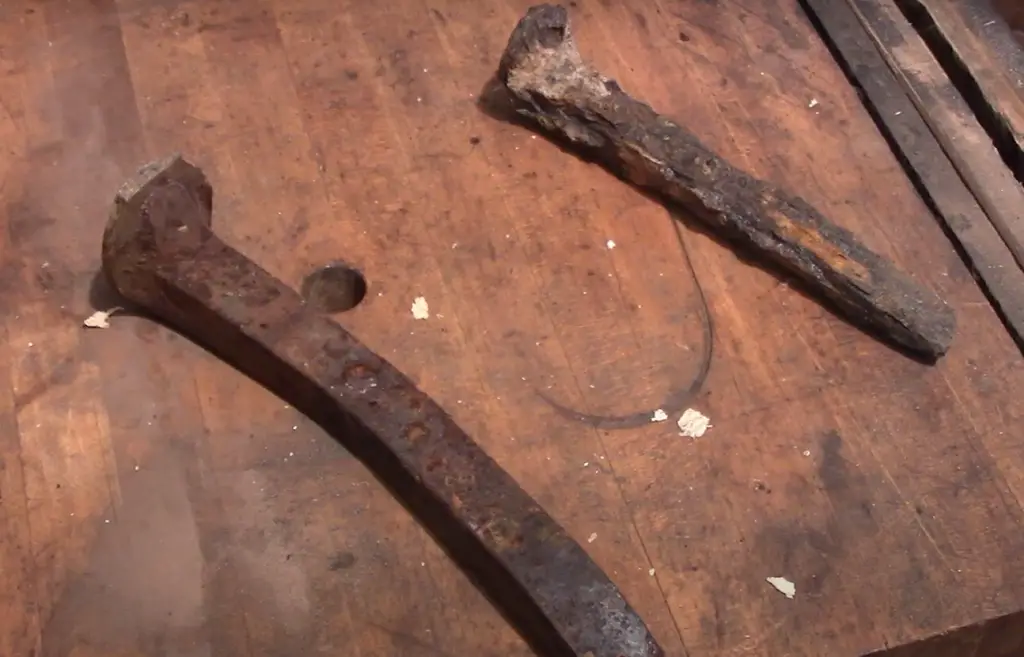
The material also has excellent holding power which makes it great for attaching track components or wooden planks without the risk of slipping. Low carbon steel is also resistant to corrosion and can withstand extreme weather conditions.
Is it possible to buy railroad spikes online?
Yes, it is possible to buy railroad spikes online. There are several retailers that specialise in selling railroad spikes and other railway supplies. You can also find antique or collectible railroad spikes on auction sites like eBay.
However, it’s important to be aware of the condition of any used items before you buy them as they may not be suitable for use.
Does the grade of the railroad spike matter?
Railroad spikes come in different grades, or levels of quality. The most common grades are A, B, and C. Grade A spikes are made from higher quality steel and they usually last longer than lower grade spikes.
Grades B and C cost less money but they might not last as long as Grade A. It’s important to choose the right grade for your project so that it will be secure and last a long time.
Are there any safety considerations when working with railroad spikes?
Yes, it is important to take safety precautions when working with railroad spikes. The metal edges can be sharp and there is a risk of flying debris when hammering or drilling.
It’s best to wear gloves and safety goggles for protection and to use the right tools for the job. Make sure to follow any safety regulations and guidelines when installing railroad spikes.
Can I reuse railroad spikes?
Railroad spikes can be reused if they are in good condition. However, it is important to inspect the spikes for any signs of wear or damage before reusing them.
If there are any cracks or chips in the metal, they should not be used as they could fail during installation and cause an accident.
It’s also important to make sure the spikes are the right size for your project and that they match the grade of other spikes in use.
Useful Video: Finding and Identifying Wrought Iron along the Railroad
Conclusion
Most railroad spikes are made from carbon steel or manganese. Some are made from other metals like stainless steel and titanium. Each metal has its own good and bad points.
Carbon steel is the most common type of metal used for railroad spikes because it is strong and durable. Manganese is another popular choice because it doesn’t corrode as easily.
Stainless steel is sometimes used in areas where things might rust. Titanium spikes are the strongest but they cost more money.
No matter what kind of metal you choose for your railroad spikes, make sure you pick something that will be able to last a long time without breaking.
References:
- https://makeitfrommetal.com/what-kind-of-metal-are-railroad-spikes-made-from/

